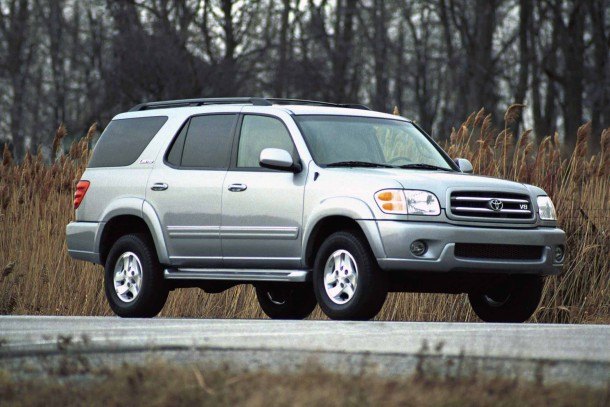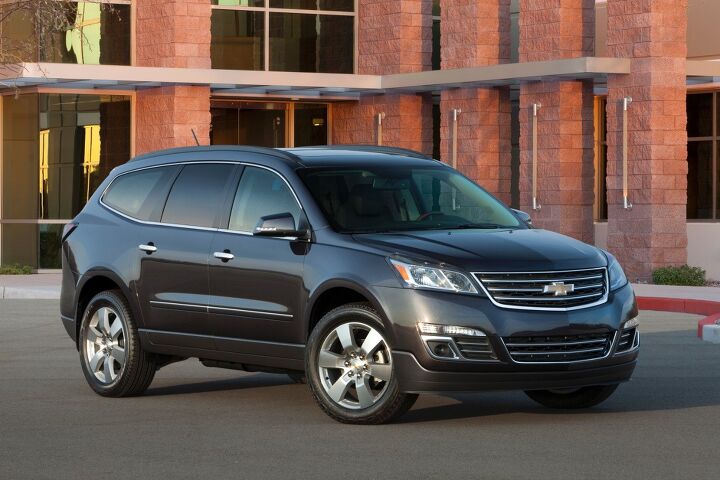Full-size SUVs Aren't Taking Part in the SUV Boom
U.S. sales of utility vehicles increased 16 percent last year. Amidst the modest decrease in volume reported by the industry in January 2016, U.S. sales of SUVs and crossovers jumped by more than 6 percent.
Yet even with drivers enjoying truly low fuel prices, we have not seen a return to the days of full-size, truck-based, body-on-frame SUV dominance in the modern SUV/crossover sector. In fact, U.S. sales of the 10 full-size SUVs which use full-size pickup truck platforms as a foundation collectively declined 2 percent as America’s auto industry soared to record highs in 2015.
And 2016 begins similarly. Two Chevrolets, two GMC, two Cadillacs, and individual nameplates from Ford, Lincoln, Nissan, and Cadillac tumbled 9 percent in January.
Of course, we’ve long since passed the days in which we expected General Motors to sell 200,000 Tahoes per year plus another 150,000 Suburbans, nearly 90,000 Yukons, 70,000 Yukon XLs, and 50,000 Escalades thrown in for good measure. In 2015, GM sold 249,000 full-size SUVs in total.
The glory days are over. That much we know.
But in concert with the launch of an all-new fleet of GM brutes in early 2014, the segment surged. Sales of the four highest-volume nameplates — Tahoe, Suburban, Expedition, Yukon — jumped 19 percent two years ago. In 2013, the core group of seven “mainstream” brand full-size SUVs had already jumped 10 percent.
Surely a higher-volume market for new vehicles, one driven largely by increased interest in utility vehicles, low fuel prices, and investment in new product would propel the category to something resembling the pre-recession glory days.
Apparently not.
Sales are slightly south of flat. (Accounting for the shorter sales month in January 2016, the daily selling rate was down 2 percent, matching the decline from calendar year 2015.)
Three key factors stand out for the lackluster performance: positioning, priorities, and personnel.
POSITIONING
These full-size SUVs moved upmarket, forsaking any notion of the concept of an entry-level full-size SUV. The benefits? The potential for profit when selling a $50,000 version of what is essentially a sub-$30,000 pickup truck is tasty. Seven of these vehicles wear decidedly common logos on their grille, but nearly four out of every ten Yukons in stock sticker at more than $70,000. Fewer than 40 percent of the Tahoes in stock cost less than $60,000.
This isn’t the positioning of alternative family transport. These are luxury SUVs which, for the most part, lack the second-row comfort of crew cab pickup trucks.
PRIORITIES
In 2015, the five top-selling utility vehicles in America were all on the smaller end of the ledger – CR-V, Escape, RAV4, Rogue, Equinox – and claimed close to a quarter of all utility vehicle sales with average AWD/4-cylinder highway fuel economy of 30 mpg. (In 2006, the five top-selling passenger cars averaged 33 in their most efficient forms, all with front-wheel drive.)
Not only are these efficient utility vehicles by far the most popular utility vehicles, but 20 percent of the growth in the SUV/CUV market in 2015 came as a result of all-new subcompact utilities that might have made us snicker a decade ago: Renegade, Trax, HR-V, CX-3, 500X.
In other words, even with improved V-8 (and EcoBoost V-6) fuel economy from full-size SUVs and lower fuel prices, it’s not difficult to see that much of the strength in the sector is derived from vehicles without any SUV fuel economy penalty.
PERSONNEL
At General Motors, where sales of their six full-size SUVs fell by 160,000 units between 2005 and 2015, General Motors added 276,000 Lambda platform crossovers since 2007. Not to mention, 2015 was a record year for the Acadia and Traverse, the second-best year ever for the Enclave, and a record year for the platform as a whole.
Undoubtedly, the removal of big crossovers from GM’s lineup wouldn’t result in a 276,000-unit improvement in full-size SUV sales at GM. But there’s also no doubt that automakers have altered their lineups, and there’s a whole flock of alternative utility vehicles stealing sales from traditional body-on-frame full-size SUVs.
Timothy Cain is the founder of GoodCarBadCar.net, which obsesses over the free and frequent publication of U.S. and Canadian auto sales figures. Follow on Twitter @goodcarbadcar and on Facebook.
More by Timothy Cain
Latest Car Reviews
Read moreLatest Product Reviews
Read moreRecent Comments
- 1995 SC In the realm of bad things that can happen to a 10th Gen Thunderbird, the subject car of this article got off easy. This was a kit back in the day and a suprising number still pop up:
- 28-Cars-Later I'm not dead, I'm getting better.
- Jalop1991 GTI all the things--because the Germans do it better.But it'll never happen.Instead, this will turn into all trim options, like VW's "R-line" and Hyundai's "N-line". Lipstick on a pig.
- Bd2 No match for N by Hyundai, the most glorious letter in the performance Alphabet.
- 28-Cars-Later Of course they will, its just a trim. At the core its a stupid idea but if it turns a buck it would be foolish to not implement. "Certainly, a precedent exists here with the likes of BMW and Mercedes long having offered hot variants of crossovers such as the X6 M and AMG-ized GLwhatever." Who I point and laugh at as often as I can. I have a friend with an actual G-Klasse (V12 no less), that's a Mercedes. Your 'Bama special ML err GL really isn't and never will be. It may rob you like a Mercedes in and out of warranty but it lacks the panache and prestige of one, just a step above K.I.A. on the Karen scale of fakeness.




































Comments
Join the conversation
Pretty obvious what's going on here. Price of new FS BOF SUVs, popularity of crew cab 1/2 ton PU's and a change/shift in the market. It isn't the 90's anymore and cheap gas isn't gonna change that.
I wanted a 15 Tahoe. I went to the dealer and tried to make a deal for a base model 4WD. The pricing was outrageous. GM, I may be wealthy, but I am not stupid. For that price, Chevy can stick those up its tail. I bought a new Pilot for 60% of the Tahoe price. I made an attempt to buy American.